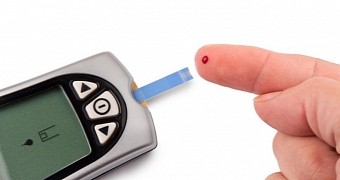Writing in today's issue of the journal Nature Communications, researchers with the Imperial College London announce the development of a type 2 diabetes drug that only becomes active when exposed to light.
Truth be told, this drug isn't exactly new in the true sense of the word. Thus, it is based on another compound, i.e. sulfonylurea, which the scientists modified in such ways that it would only be active when exposed to blue light.
The prototype drug, currently known as JB253, has until now only been tested in laboratory conditions. However, it performed surprisingly well during the experiments carried out by the Imperial College London specialists.
More precisely, the drug managed to persuade pancreatic cells kept in a lab dish to start producing insulin. Once the blue light shining on this dish was switched off, the drug let the pancreatic cells be.
“So far, we’ve created a molecule that has the desired effect on human pancreatic cells in the lab,” Dr. David Hodson commented on the outcome of this research project in an interview with the press.
The scientists who developed this prototype type 2 diabetes drug imagine that one day in the not-too-distant future JB253 will enable people diagnosed with this condition to better control their blood sugar levels simply by shining a blue light on their skin.
Still, given the fact that the compound has until now only been tested on cells outside the body, there is little doubt that there is plenty of work left to do until this drug can be offered as a valid treatment option to type 2 diabetes sufferers worldwide.
“There’s a long way to go before a therapy is available to patients, but this remains our ultimate goal,” Imperial College London specialist Dr. David Hodson wished to stress.
Interestingly enough, the scientists behind this research project expect that some day it might be possible to use light-activated drugs to treat not just diabetes, but plenty other disease that are now plaguing public health.
As Professor Dirk Trauner put it, “Photoswitchable drugs and photopharmacology could be enormously useful for all sorts of diseases, by allowing remote control over specific body processes with light.”

 14 DAY TRIAL //
14 DAY TRIAL //